Related Research Articles

Elizabeth Cavendish, later Elizabeth Talbot, Countess of Shrewsbury, known as Bess of Hardwick, of Hardwick Hall, Derbyshire, was a notable figure of Elizabethan English society. By a series of well-made marriages, she rose to the highest levels of English nobility and became enormously wealthy. Bess was reportedly a shrewd businesswoman, increasing her assets with business interests including mines and glass-making workshops.
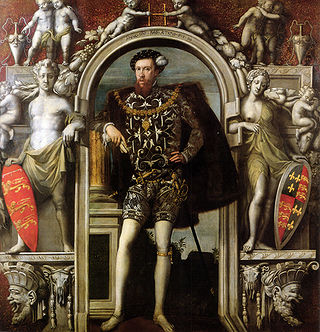
Henry Howard, Earl of Surrey, KG was an English nobleman, politician and poet. He was one of the founders of English Renaissance poetry and was the last known person to have been executed at the insistence of King Henry VIII. His name is usually associated in literature with that of the poet Sir Thomas Wyatt. Owing largely to the powerful position of his father Thomas Howard, 3rd Duke of Norfolk, Henry took a prominent part in court life, and served as a soldier both in France and in Scotland. He was a man of reckless temper, which involved him in many quarrels, and finally brought upon him the wrath of the ageing Henry VIII. He was arrested, tried for treason and beheaded on Tower Hill.
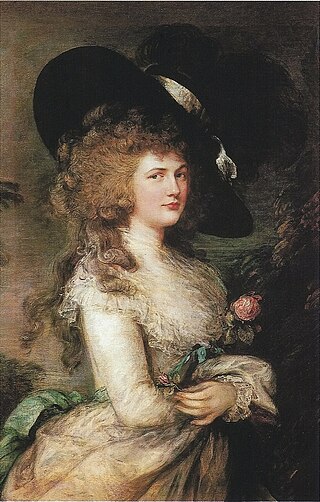
Georgiana Cavendish, Duchess of Devonshire, was an English aristocrat, socialite, political organiser, author, and activist. Born into the Spencer family, married into the Cavendish family, she was the first wife of William Cavendish, 5th Duke of Devonshire, and the mother of the 6th Duke of Devonshire.
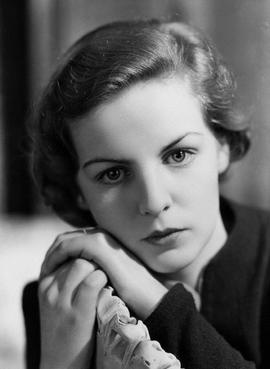
Deborah Vivien Cavendish, Duchess of Devonshire, was an English aristocrat, writer, memoirist, and socialite. She was the youngest and last-surviving of the six Mitford sisters, who were prominent members of British society in the 1930s and 1940s.

William Cavendish, 1st Duke of Devonshire, was an English Army officer, Whig politician and peer who sat in the House of Commons from 1661 until 1684 when he inherited his father's peerage as Earl of Devonshire and took his seat in the House of Lords. Cavendish was part of the "Immortal Seven" which invited William of Orange to depose James II of England as part of the Glorious Revolution, and was rewarded for his efforts by being elevated to the Duke of Devonshire in 1694.

William Cavendish, 5th Duke of Devonshire,, was a British nobleman, aristocrat, and politician. He was the eldest son of William Cavendish, 4th Duke of Devonshire, by his wife, the heiress Lady Charlotte Boyle, suo jure Baroness Clifford, who brought in considerable money and estates to the Cavendish family. He was invited to join the Cabinet on three occasions, but declined each offer. He was Lord High Treasurer of Ireland and Governor of Cork, and Lord Lieutenant of Derbyshire. In 1782, he was made a Knight of the Order of the Garter.
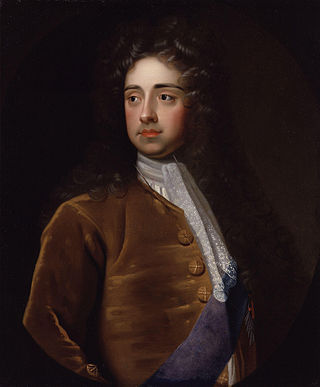
Charles Talbot, 1st Duke of Shrewsbury was an English peer and Whig politician who was part of the Immortal Seven group that invited William of Orange to depose King James II of England during the Glorious Revolution. He was appointed to several minor roles before the revolution, but came to prominence as a member of William's government. Born to Roman Catholic parents, he remained in that faith until 1679 when—during the time of the Popish Plot and following the advice of the divine John Tillotson—he converted to the Church of England. Shrewsbury took his seat in the House of Lords in 1680 and three years later was appointed Gentleman-Extraordinary of the Bedchamber, suggesting he was in favour at the court of Charles II.

Elizabeth Blount, commonly known during her lifetime as Bessie Blount, was a mistress of Henry VIII of England.

Charles Sackville, 6th Earl of Dorset and 1st Earl of Middlesex, KG was an English poet and courtier.

Mary Alice Cavendish, Duchess of Devonshire, was a British courtier who served as Mistress of the Robes to Queen Elizabeth II from 1953 to 1967. She was the granddaughter of Prime Minister Robert Gascoyne-Cecil, 3rd Marquess of Salisbury.
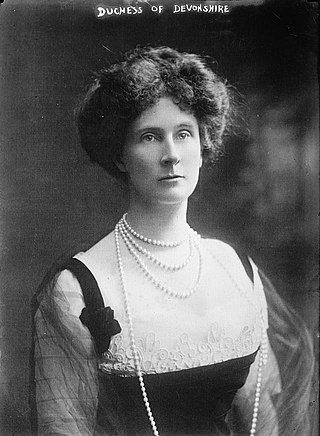
Evelyn Emily Mary Cavendish, Duchess of Devonshire,, was the wife of Victor Cavendish, 9th Duke of Devonshire. She was the elder daughter of politician and diplomat Henry Petty-Fitzmaurice, 5th Marquess of Lansdowne, and grew up amidst public life. Evelyn's marriage to Cavendish, nephew and heir presumptive of Spencer Cavendish, 8th Duke of Devonshire, led to her becoming Duchess of Devonshire in 1908. With her position, she oversaw the reorganisation of the Devonshire estates and presided over four English houses and one Irish castle.

John Egerton, 3rd Earl of Bridgewater KB PC was a British nobleman from the Egerton family.

Mary "Moll" Davis, also spelt Davies or Davys, was a courtesan and mistress of King Charles II of England. She was an actress and entertainer before and during her role as royal mistress.

Charlotte Elizabeth Cavendish, Marchioness of Hartington, 6th Baroness Clifford was the daughter of Richard Boyle, 3rd Earl of Burlington and Lady Dorothy Savile. From 1748 until her death, she was married to William Cavendish, Marquess of Hartington, later the 4th Duke of Devonshire and Prime Minister of Great Britain.

Mary FitzRoy, Duchess of Richmond and Somerset, born Mary Howard, was a daughter-in-law of King Henry VIII of England, being the wife of his illegitimate son Henry FitzRoy, 1st Duke of Richmond and Somerset.

The Cavendishfamily is a British noble family, of Anglo-Norman origins. They rose to their highest prominence as Duke of Devonshire and Duke of Newcastle.

Elizabeth Seymour, Duchess of Somerset and suo jureBaroness Percy was an English courtier.
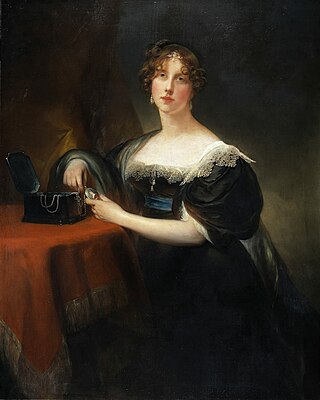
Georgiana Dorothy Howard, Countess of Carlisle was a British noblewoman. She was born after nine years of childless marriage between William Cavendish, 5th Duke of Devonshire, and his wife, Lady Georgiana Spencer, the political hostess and socialite. As such, she was a member of one of the country's grandest and richest families.
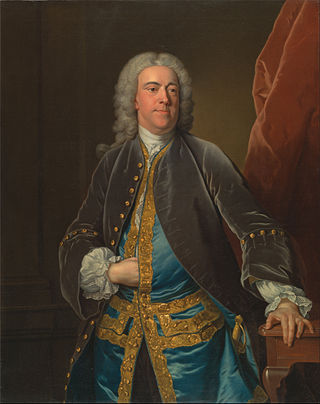
Stephen Poyntz (1685–1750), of Midgham in Berkshire, was an English diplomat and courtier.

Blanche Cavendish, Countess of Burlington, was the wife of William Cavendish, 2nd Earl of Burlington, who would later become the 7th Duke of Devonshire.
References
- 1 2 3 4 5 "Campion, Mary Anne (c. 1687–1706), singer and dancer" . Oxford Dictionary of National Biography (online ed.). Oxford University Press. 2004. doi:10.1093/ref:odnb/70104 . Retrieved 30 March 2020.(Subscription or UK public library membership required.)
- 1 2 Hattersley, Roy (2013). The Devonshires: The Story of a Family and a Nation. Chatto & Windus. ISBN 978-0-7011-8624-1.
- ↑ Highfill, Philip H.; Burnim, Kalman A.; Langhans, Edward A. (1975). A Biographical Dictionary of Actors, Actresses, Musicians, Dancers, Managers and Other Stage Personnel in London, 1660-1800: Cabanel to Cory. SIU Press. ISBN 978-0-8093-0692-3.